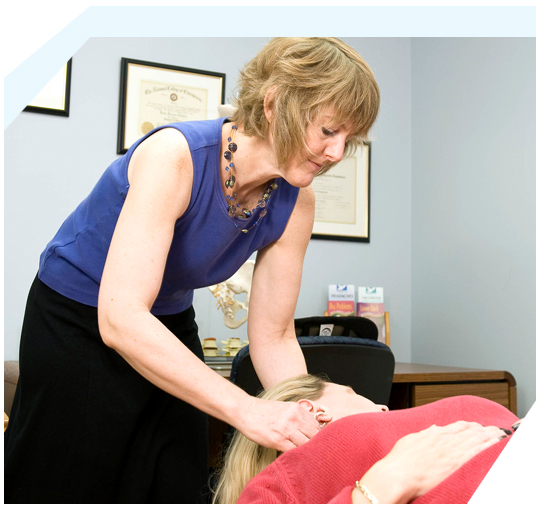Alcohol Rehab
Near Me In SAN JOSE CALIFORNIA
Choosing an Alcohol Rehabilitation
Program Near Mer
Because a person’s sobriety and health are on the line, finding a rehab facility that suits their condition is very important. For example, someone who has a drinking problem will be able to make greater progress in a facility that specializes in treating alcohol use disorder.
Patients are more likely to finish treatment when they are under the right program. This is because they can get the support that they need, both medically and mentally. They are therefore more likely to come out of rehab sober and capable of maintaining their sobriety.
The sheer number of treatment options out there can make the decision difficult for patients. And not all rehab facilities are equal—some are ultimately better than others. But with that in mind, there are several factors that can help you narrow down your search. LEARN MORE
What is Alcohol
Rehab?
First we need to discuss what alcohol rehab is so that patients can understand what the different options are. Alcohol rehab is a combination of detox and behavioral therapy.
LEARN MORE


Alcohol Detox:
What is it?
Just like drug abuse, it can be extremely difficult to recover from an alcohol use disorder. But luckily, that’s what detox programs are for. A detox program is designed to eliminate the toxins within your body that are there due to prolonged exposure to alcohol.
LEARN MORE
What is Alcohol
Rehab Like?
There are two main options for people who want to go into alcohol rehab: inpatient treatment and outpatient treatment. Inpatient, also known as residential treatment, involves staying in a treatment facility for the duration of the program. LEARN MORE


How Long Does
Alcohol Rehab Take?
Everyone experiences addiction differently: that’s why the treatment process is always unique to each individual. There is no single formula for treatment. A personalized approach always works best when it comes to battling any type of addiction. LEARN MORE
How Much Does
Alcohol Rehab Cost?
Because alcohol addiction treatment is so varied, there is no one answer to this question. But for most people, the cost of rehab is their number one concern.
The cost of alcohol addiction treatment will be influenced by factors like the type of program, the length of treatment, the location of the facility, the amenities offered, etc. LEARN MORE

Inpatient Alcohol Rehab
As we’ve discussed previously, inpatient rehab involves staying in a facility while the patient receives medical care. Under an inpatient program, the patient receives round-the-clock care from medical professionals and addiction experts.
Those who are recovering from alcoholism can rest easy knowing that help is always available whenever they need it. There are medical professionals and other specialists available 24 hours a day. This is crucial when going through withdrawal and intense cravings.
Outpatient Alcohol Rehab
Outpatient treatment doesn’t have the same structure as inpatient treatment. This is why outpatient tends to have a lower success rate. But it still has its own advantages. It can work wonders for people with more manageable conditions, as well as patients with the willpower to stay sober even outside a rehab facility. LEARN MORE
Alcohol Rehabs near Me:
What to Look for
People struggling with alcohol addiction should take their needs into consideration when choosing a rehab facility and program. Think about the severity of addiction, any co-occurring medical and mental health problems, and the cost of rehab. LEARN MORE
How to Treat Alcoholism:
Alcohol Rehab Types
Because most people don’t get themselves treated for alcohol addiction, there’s a misconception that only Alcoholics Anonymous can help them with their problem. And while that is one of the most popular support groups around, it is not your only option. Today, there are more choices than you might expect. LEARN MORE
Alcohol Use Disorder Therapies
On top of inpatient and outpatient treatment, there are alternative treatment therapies that are a bit more unorthodox, but can still work depending on a person’s needs. Art therapy, dance therapy, music therapy, etc.: these therapies are offered in many different facilities because they can support a person’s journey towards sobriety.
LEARN MORE
Support Groups
Support groups work best on top of an existing addiction treatment plan. This is because people in recovery often need additional support from their community. They need a support system that’s outside of their usual social circles.
Family Therapy
If a patient has a strong support system, family support can go a long way. But family therapy can also work even if the patient comes from a toxic home environment. The therapy involves helping family members improve their communication and resolve their conflicts.
Cognitive Behavioral
Therapy
Cognitive behavioral therapy is just as important as detoxification. This is a psychological form of treatment that helps with a wide range of mental health issues such as anxiety, depression, eating disorders, and even alcohol abuse.
Psychotherapy
Psychotherapy is really more of a general term for the treatment of mental health problems. It involves speaking with a psychologist, psychiatrist, or other mental health provider.
During psychotherapy, patients learn about their feelings, thoughts, moods, and behaviors.
Counseling
Speaking of counseling, alcohol counseling is an important step in treating alcohol use disorder. A counselor can offer guidance and support throughout a person’s journey to sobriety. They will guide a patient on how to live an alcohol-free life.LEARN MORE
Alcohol Rehab for Men
When choosing an alcohol rehab center, it’s also a good idea to look for facilities that specialize in particular demographics. Some facilities, for example, specialize in treating veterans, teenagers, single parents, couples, and members of the LGBT community.
Specific type of care is sometimes necessary when treating people of certain demographics.
LEARN MORE
Alcohol Rehab for Women
Similarly, the effects of addiction affect women differently than men. Women may develop addiction faster than men and also experience more mental health problems because of their addiction. In fact, millions of women in the US engage in drinking behavior that eventually develops into alcohol abuse. LEARN MORE

What Kind of
Aftercare is Available?
Sober Living &Alumni
Support
Recovering from addiction isn’t just about getting sober. It’s about learning healthy coping mechanisms so that sobriety can be maintained for the long-term. Aftercare is therefore just as important as rehab itself. LEARN MORE
What Type of Licenses
& Credentials Should
I Look for?
It goes without saying that you shouldn’t go to an alcohol rehab facility that is not certified. You wouldn’t go to a doctor or a dentist without the appropriate credentials—the same applies to addiction treatment. LEARN MORE


Addiction Treatment for
Alcoholism
Alcoholism or alcohol use disorder is not an easy thing to live with. Some people deny that they have a problem in the first place. Social drinking is such a widely celebrated activity that it often becomes difficult to differentiate casual drinking and alcohol abuse. LEARN MORE
Why Substance Abuse
Treatment is Important
Many people who struggle with alcohol use disorder or experience withdrawal symptoms do not receive treatment at all. Instead of going to a detox center, they deny that they have a problem or just choose to ignore it. LEARN MORE


Definition of Alcoholism
Alcoholism is a severe form of alcohol abuse that involves the inability to manage drinking habits. It is also referred to as alcohol use disorder. Treatment for this condition depends on a number of factors, including the severity of addiction. It can be broken down into three categories: mild, moderate, and severe. Regardless of severity, alcoholism can cause damage to the person’s body and mind. LEARN MORE
About San Jose
Rehab Treatments In San Jose California
- Alcohol Addiction San Jose
- Alcohol Detox San Jose
- Alcohol Rehab San Jose
- Alcohol Rehab for Veterans San Jose
- Finding the Best Alcoholism Rehab Near Me in San Jose
- AA Free & Confidential Alcoholics Anonymous Helpline San Jose
- Benzodiazepines Rehab Near Me San Jose
- Christian Drug Rehab San Jose
- Drug Rehab-addiction Treatment Centers Near You San Jose
- Dual Diagnosis Treatment Centers Near You San Jose
- (EAP) Employee Assistance Programs San Jose
- Fentanyl San Jose
- Find 30-Day Inpatient Drug Rehabs Near You! San Jose
- Find 60 Day Inpatient Drug Rehabs Near You! San Jose
- Find 90 Day Inpatient Drug Rehabs Near You! San Jose
- Hydrocodone San Jose
- Inpatient Drug and Alcohol Rehab Near Me San Jose
- Inpatient Drug Rehab Treatment Program San Jose
- Luxury Drug & Alcohol Addiction Treatment Centers San Jose
- Mental Health, Addiction, and Drug Rehab San Jose
- NA Hotline, Narcotics Anonymous 24 Hour Hotline San Jose
- Online Therapy|Mental Health|Substance Abuse|Dual Diagnosis San Jose
- Mental Health Online Therapy | Teletheraphy San Jose
- Outpatient Drug Rehab Near Me San Jose
- Oxymorphone San Jose
- Prescription Drugs San Jose
- Student Drug Rehab San Jose
About California
Browse by State
- ALABAMA
- ALASKA
- ARIZONA
- ARKANSAS
- CALIFORNIA
- COLORADO
- CONNECTICUT
- DELAWARE
- FLORIDA
- GEORGIA
- HAWAII
- IDAHO
- ILLINOIS
- INDIANA
- IOWA
- KANSAS
- KENTUCKY
- LOUISIANA
- MAINE
- MARYLAND
- MASSACHUSETTS
- MICHIGAN
- MINNESOTA
- MISSISSIPPI
- MISSOURI
- MONTANA
- NEBRASKA
- NEVADA
- NEW HAMPSHIRE
- NEW JERSEY
- NEW MEXICO
- NEW YORK
- NORTH CAROLINA
- NORTH DAKOTA
- OHIO
- OKLAHOMA
- OREGON
- PENNSYLVANIA
- RHODE ISLAND
- SOUTH CAROLINA
- SOUTH DAKOTA
- TENNESSEE
- TEXAS
- UTAH
- VERMONT
- VIRGINIA
- WASHINGTON
- WEST VIRGINIA
- WISCONSIN
- WYOMING

